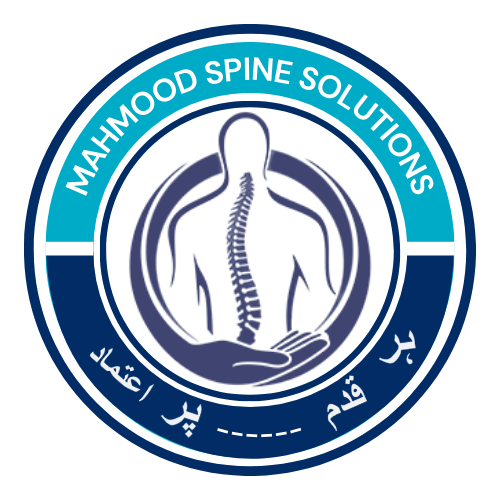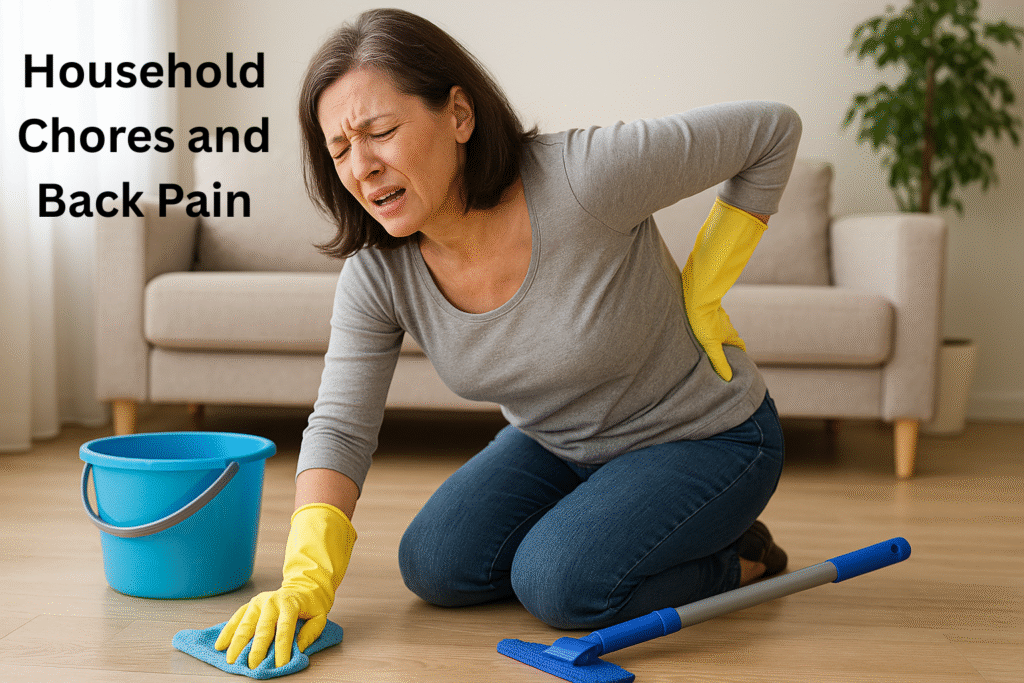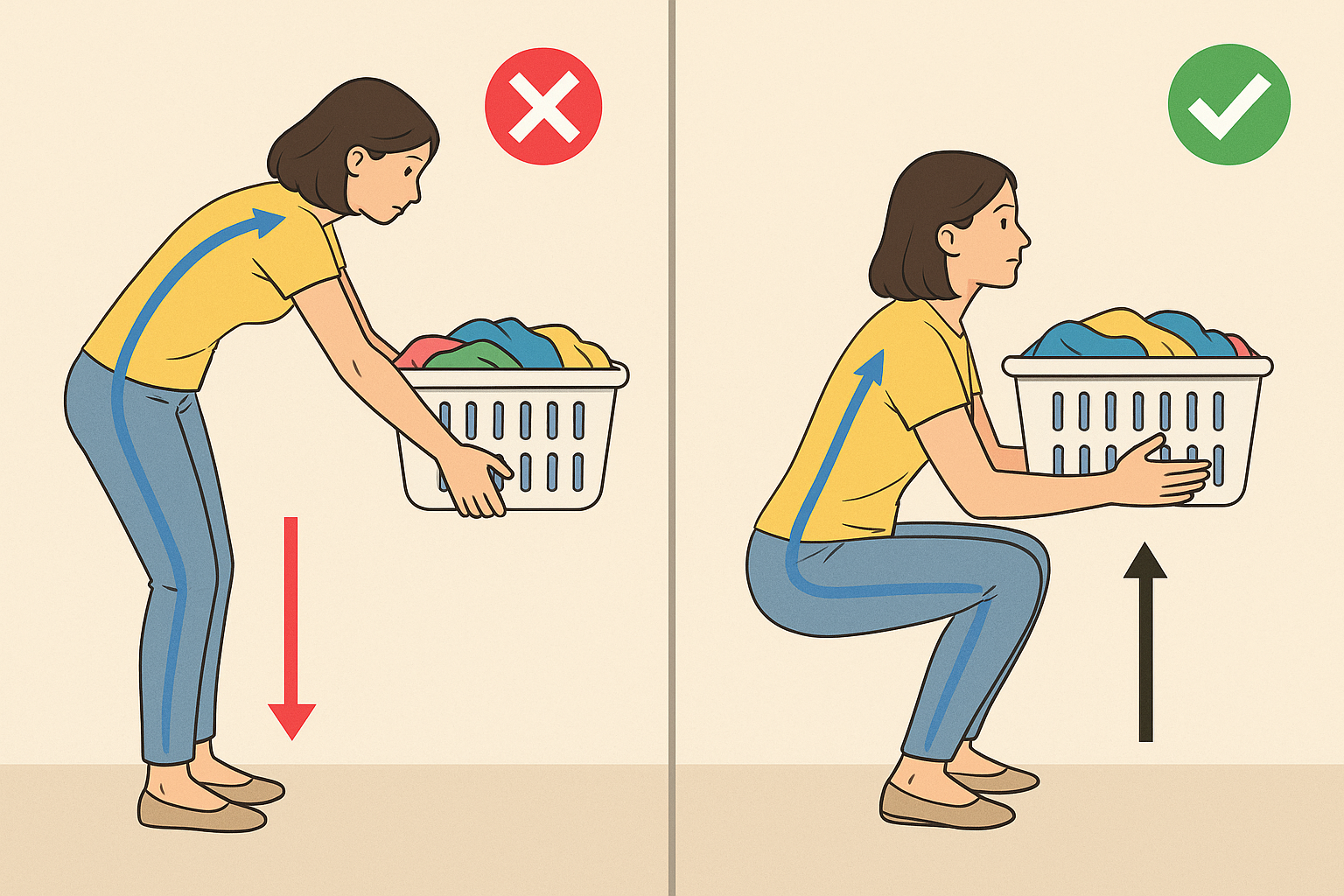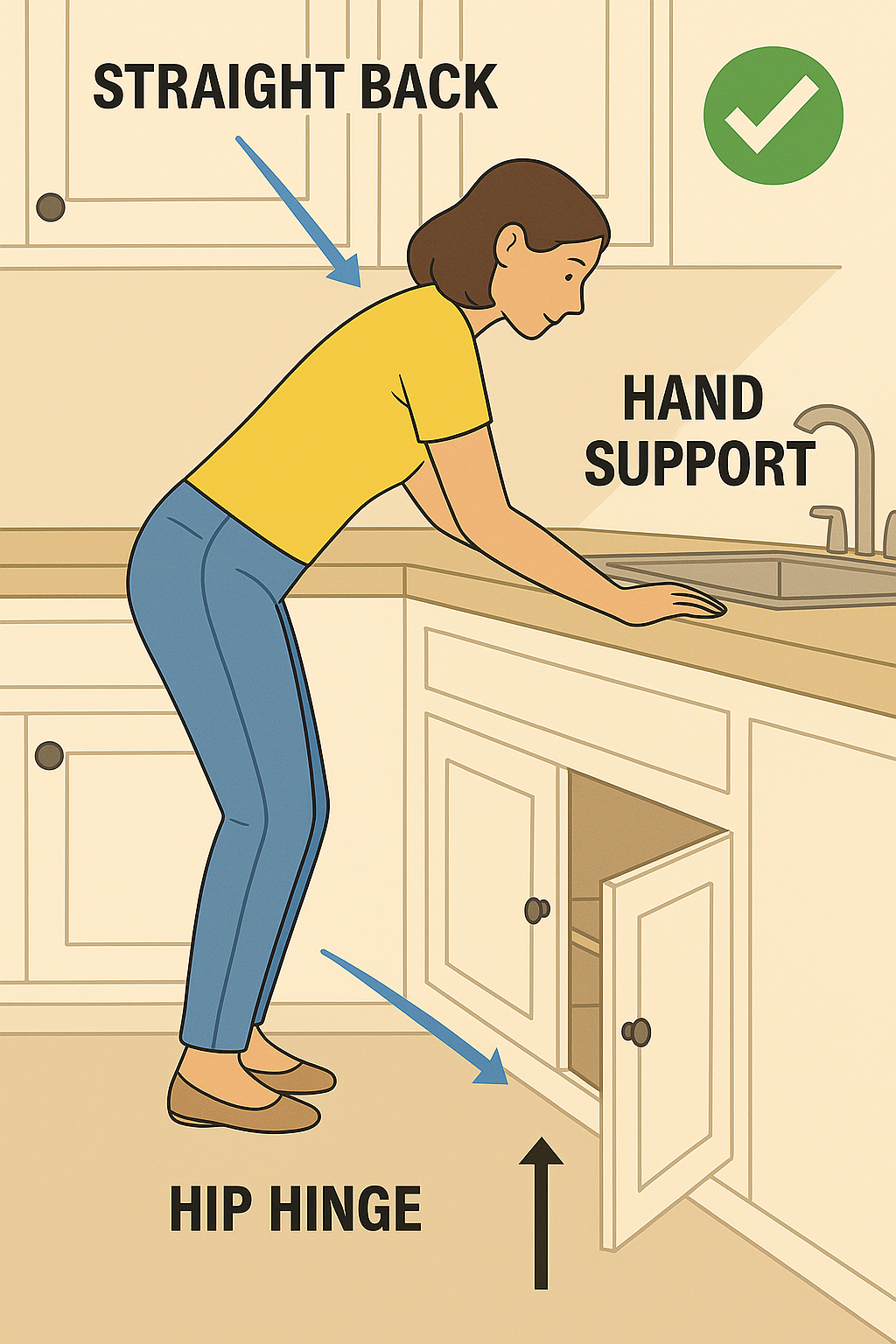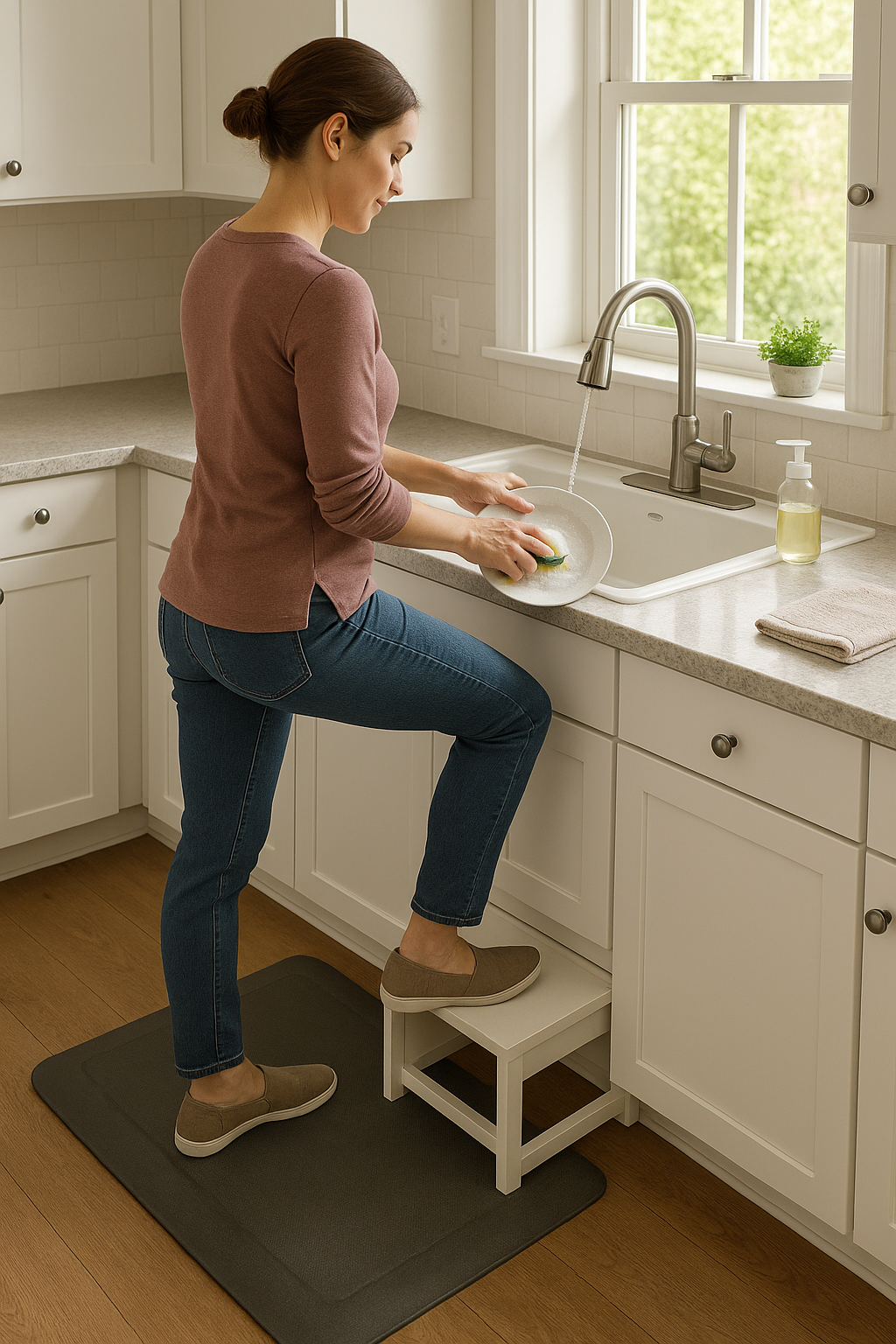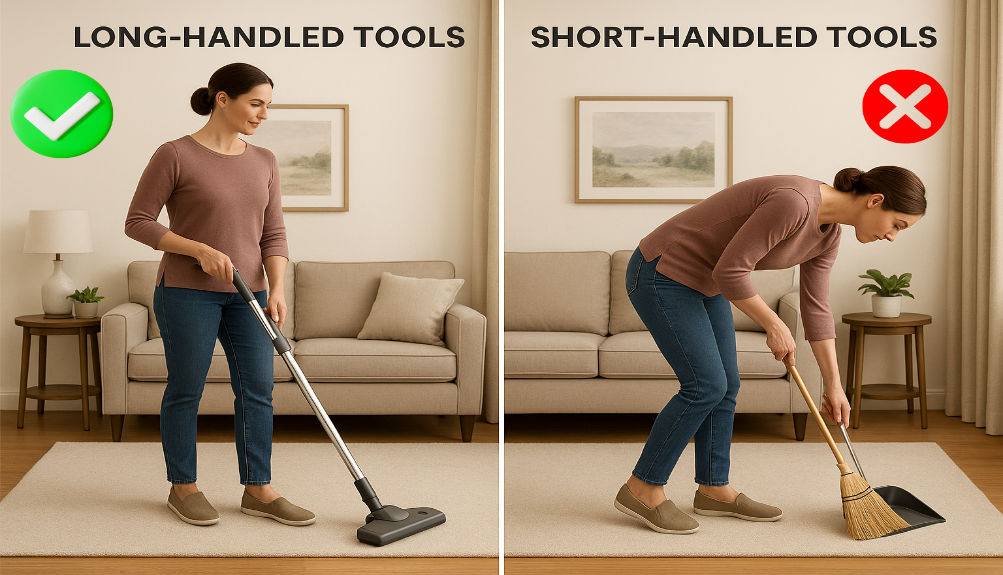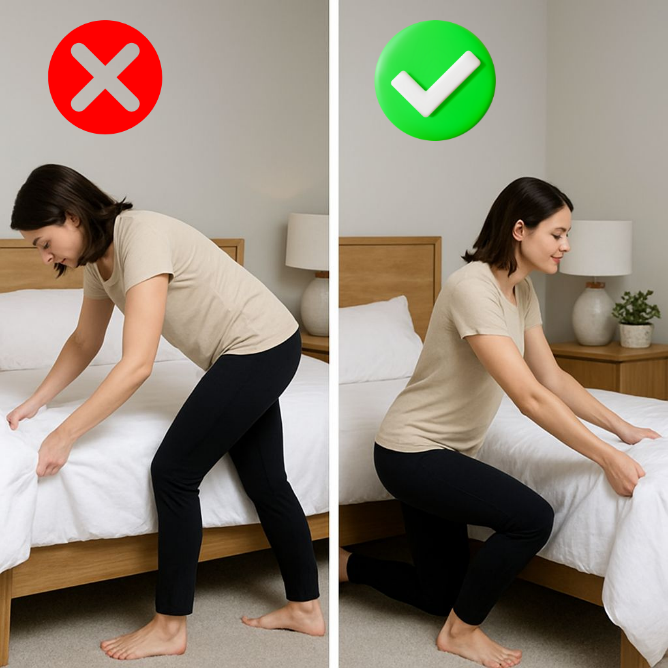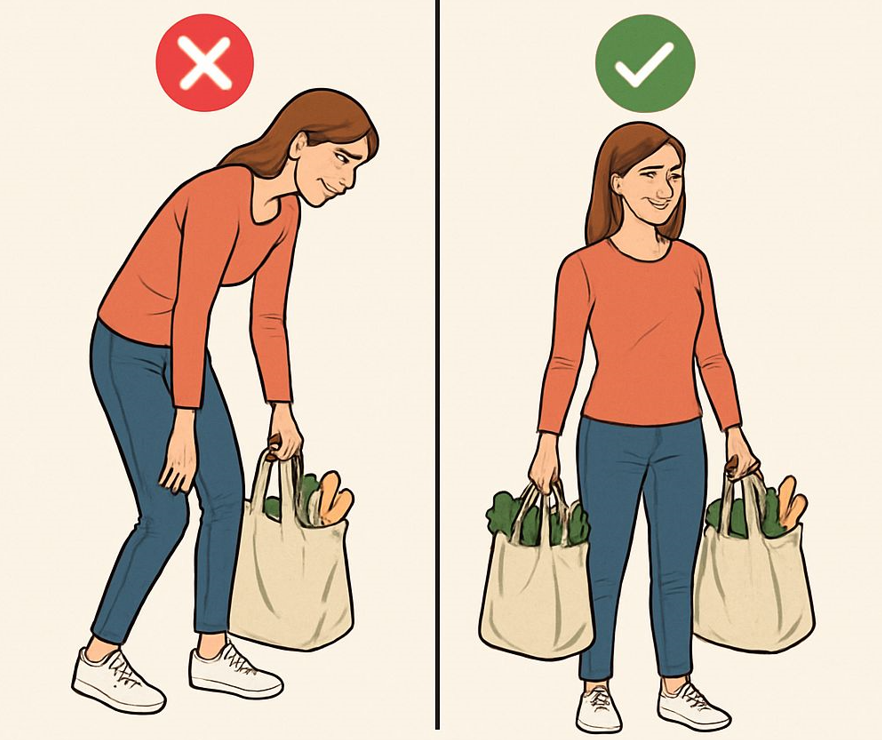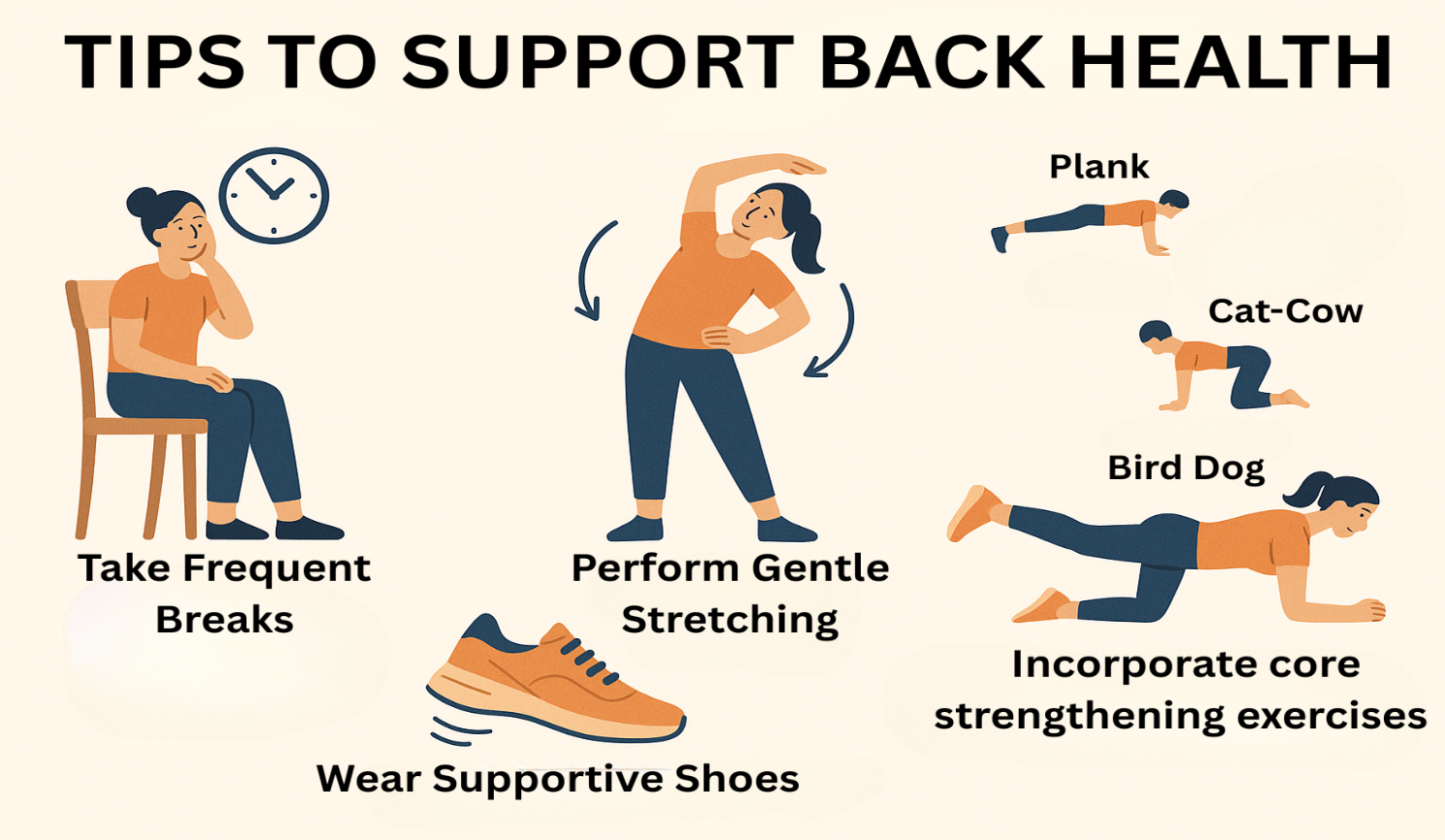Household chores and back pain are closely linked, making this a widespread concern affecting individuals across all age groups. One often-overlooked contributor to back discomfort is the way we perform routine household tasks. Repeated bending, twisting, lifting, or prolonged standing can place significant strain on the spine, especially when done with poor body mechanics. Understanding and applying physical therapy-based techniques can help reduce the risk of injury and support long-term spinal health.
Why Household Chores Cause Back Pain:
Many common household activities involve postures or movements that stress the lower back:
- Vacuuming and sweeping require repeated forward bending and twisting.
- Washing dishes or cooking often involves prolonged standing with a forward-leaning posture.
- Lifting objects such as laundry baskets or grocery bags can strain spinal discs if done incorrectly.
- Making the bed, mopping, or cleaning low surfaces may involve overreaching or poor spinal alignment.
When these activities are done repetitively without proper technique, the risk of back strain, muscle fatigue, and even disc injury increases.
Safe Movement Techniques from Physical Therapy:
Here are evidence-based techniques physical therapists recommend to prevent back pain during daily household tasks:
1) Proper Lifting Mechanics:
- Bend at your hips and knees, not your back.
- Keep the object close to your body.
- Engage your abdominal muscles to support your spine.
- Avoid twisting while lifting—pivot your feet to turn your body.
🔹 Recommended for lifting laundry baskets, groceries, water buckets, or children.
2) Neutral Spine and Hip Hinging:
- Maintain a neutral spine by keeping your back straight when bending forward.
- Use a hip hinge, where you bend at the hips while slightly bending your knees.
- Support one hand on a stable surface to reduce back load if needed.
🔹 Helpful for cleaning floors, reaching low cabinets, or picking up toys.
3) Standing Tasks and Spinal Load:
While washing dishes or preparing meals:
- Stand with feet hip-width apart.
- Rest one foot on a small stool or open cabinet base to reduce lumbar pressure.
- Alternate feet and shift weight regularly.
- Use a cushioned mat for additional support.
🔹 Minimizes strain during prolonged standing activities.
4) Vacuuming and Sweeping Technique:
- Use long-handled tools to avoid excessive bending.
- Walk with the vacuum rather than leaning and reaching.
- Keep the motion fluid and maintain a straight spine.
- Alternate arms to distribute the muscle workload evenly.
5) Making the Bed Safely:
Avoid bending over the bed. Instead:
- Move around the bed to work from different angles.
- Place one knee on the mattress for support when tucking in sheets.
- Use the hip hinge to avoid spinal flexion.
6) Carrying and Transferring Loads:
- Distribute weight evenly between both arms (e.g., carry two grocery bags instead of one heavy one).
- Use baskets with wheels or lightweight containers.
- Avoid carrying items on one side of the body for long periods.
7) Core Stability and Awareness:
- Beforelifting or bending, activate your core: gently tighten your abdominal muscles as if bracing for a light impact.
- Maintain this core engagement during the entire movement.
Additional Tips to Support Back Health:
- Take frequent breaks to avoid prolonged static positions.
- Perform gentle stretching before and after housework.
- Wear supportive, cushioned shoes while standing or walking on hard surfaces.
- Incorporate core strengthening exercises into your weekly routine (e.g., planks, bird-dogs, or cat-cow).
When to Consult a Physical Therapist:
You should seek professional help if:
- Pain persists for more than a few days despite rest.
- There’s sharp, radiating pain to the legs or feet.
- You experience numbness, tingling, or muscle weakness.
- Every day activities become limited by discomfort.
Conclusion:
Household chores and back pain don’t have to go hand in hand. With just a few mindful adjustments to how you move, bend, lift, and stand, you can dramatically reduce your risk of strain and discomfort. Back pain during routine tasks is common, but it’s also preventable. By applying proven physical therapy techniques and protecting your posture, you can take control of your spinal health and keep doing the things you love, pain-free.
About Authors
Dr. Muhammad Mahmood Ahmad is a Spinal as well as an Orthopedic Surgeon with over 14 years of experience currently practicing at Razia Saeed Hospital, Multan.
